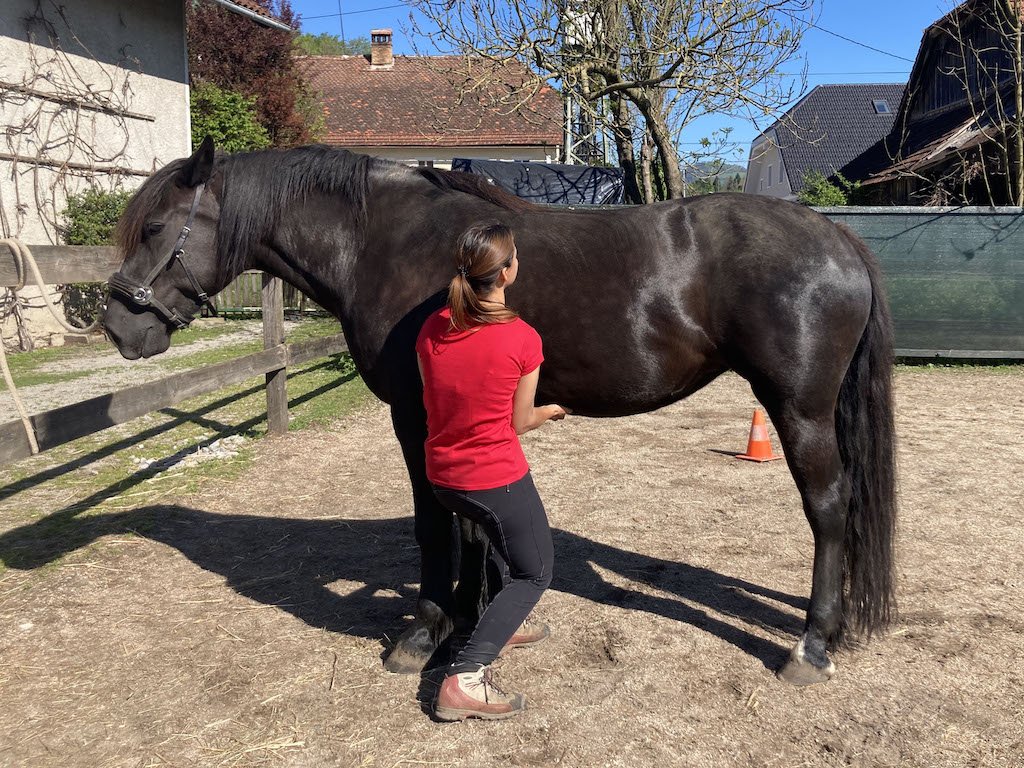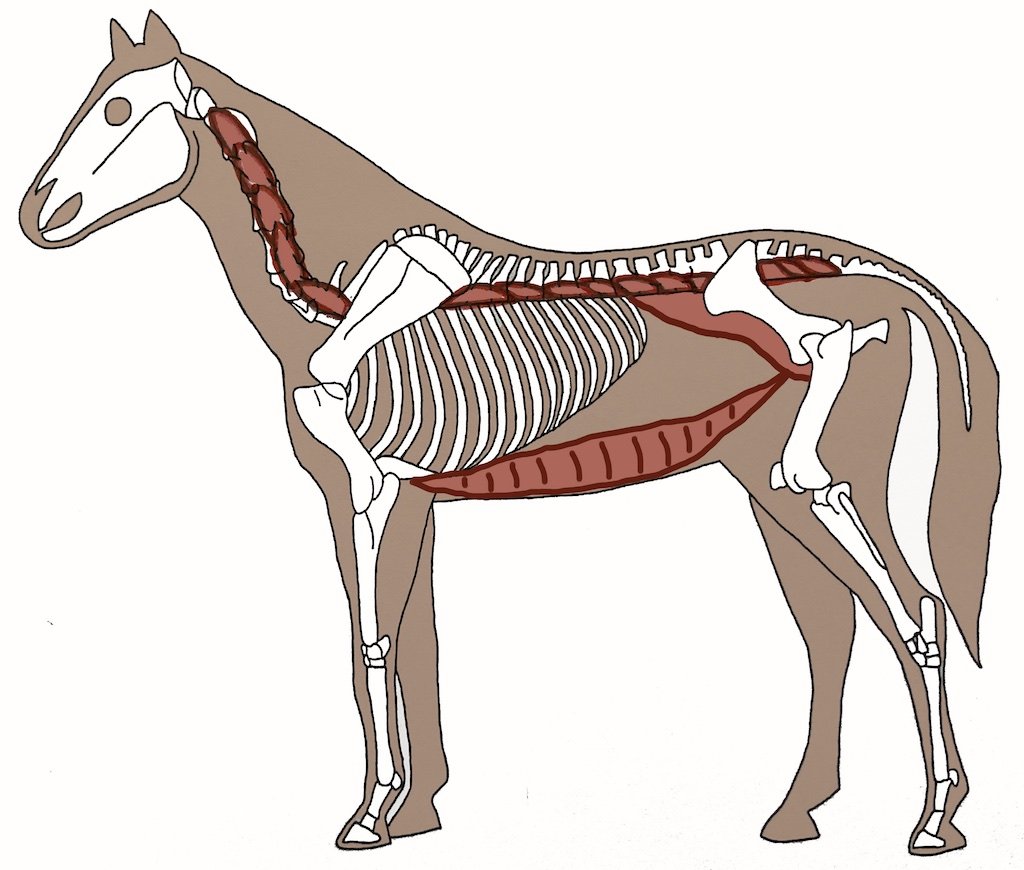Is the belly lift exercise always a good idea?
The belly lift exercise is aimed towards strengthening the abdominal muscles.
I absolutely love how core strength has become a very popular topic in the horse world. More and more people are starting to realize that a strong core is a very important prerequisite for the horse to be able to carry a rider in a healthy way. The definition of »core« varies from source to source, but it generally includes the abdominal muscles as well as the spinal stabilizers. I like to include the scalenes and longus colli muscles – the muscles that sit just below the last cervical vertebrae and help lift the base of the neck.
The core musculature consists of abdominal muscles and the spinal stabilizers, as well as the longus colli and scalenes (not pictured here).
There are many ways and exercises we can use to strengthen a horse's core. Among the more popular ones are carrot stretches and belly lifts. The idea here is to target the core musculature while the horse is standing still. We can think of this kind of exercise like a crunch. While belly lifts are relatively easy to learn and do, there are always a few things we need to keep in mind. First off, what exactly is a belly lift? In this exercise, we put pressure on the horse's belly using our fingertips to invite him to activate his abdominal muscles to lift up the back. The effect can sometimes be quite dramatic, as the horse's back visibly comes up, which is why I think people really like this one. Usually, we like to hold the lift for 3-5 seconds and repeat the exercise three times.
The effect of a belly lift can be quite dramatic.
While I do recommend this exercise in some cases, I don't think it's one of the exercises that are appropriate for every horse. For some horses, this can be a very tough and sometimes uncomfortable exercise. Usually when that is the case, the horse will either not lift the back at all, no matter how much we try, or they will kick out, try to bite and get away from this exercise. In those cases, we need to listen to the horse and not force it. Some people will use tools like a hoof pick to do this with horse's that don't respond to finger pressure, but in my opinion, this is not the best idea. If the horse can't lift the back in response to pressure from your fingers, this exercise might be too difficult. If we try to force it by using more pressure or maybe even pain, it's really not fair to the horse. The same goes for when a horse bites or kicks in response to the exercise. If it's causing him pain or discomfort, don't do it. The idea is to build the horse's strength in a way that is enjoyable for the horse, otherwise, it's not training - it's abuse. There are plenty of other exercises that achieve the same effect, so if the belly lift does not suit your horse, it's really not the end of the world. There is more than one way to build strength.
That said, if your horse really resents this exercise, it might be a good idea to look into what exactly it is that he finds so painful. It could be unresolved pain issues in the back, a tight diaphragm, even stomach ulcers. So, if you have a horse that hates belly lifts, don't force them, but do consult a professional to get to the bottom of his issues.


